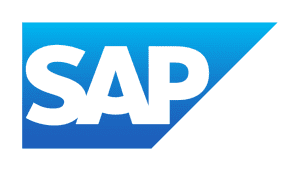Attention large enterprises: mandatory electronic filing of financial statements from 2025
Starting January 1, 2025, a fundamental change will affect how large enterprises submit their annual financial statements to the Dutch Chamber of Commerce. The era of PDFs and physical documents is officially ending. According to the Ministry, electronic filing will become legally mandatory for financial years starting in 2025. This means large companies must transition to Standard Business Reporting (SBR), using either XBRL or iXBRL depending on their reporting requirements.
Who qualifies as a large enterprise, and what does it mean for you?
An organization qualifies as a large enterprise if it meets at least two of the following criteria for two consecutive financial years:
| Criteria | Threshold |
|---|---|
| Total Assets | > €25 million |
| Net Revenue | > €50 million |
| Average Employees (FTE) | > 250 employees |
Previously, these electronic filing requirements applied only to micro, small, and medium-sized enterprises. Now, large organizations are also subject to the mandate.
What does electronic filing entail? And what’s the difference between XBRL and iXBRL?
Electronic filing means submitting your annual accounts digitally rather than manually to the Chamber of Commerce, using the SBR framework. Within this framework, companies choose between:
-
XBRL (eXtensible Business Reporting Language): A machine-readable format, ideal for regulatory efficiency and system interoperability.
-
iXBRL (Inline XBRL): Combines machine-readability with human-readable HTML, embedding XBRL tags directly within a formatted document.
iXBRL is not a website but a dynamic, browser-viewable report that retains full machine-processable structure. It enables optimal accessibility and automation in reporting.
Key requirements to keep in mind
-
Financial Year 2025: Only the balance sheet, profit and loss account, and—if applicable—the cash flow statement need to be tagged.
-
Block Tagging: From 2026, notes to the financial statements and accounting policies must also be tagged.
-
iXBRL Mandatory for IFRS: Organizations reporting under Dutch GAAP may still use XBRL; those under IFRS must use iXBRL.
-
Avoid PDF Conversion: PDF-based workflows are inherently inefficient and hinder data quality and automation.
Why digital reporting Is the new norm—and how CSRD accelerates the shift
The move to digital reporting is not only logical but accelerated by EU legislation such as the Corporate Sustainability Reporting Directive (CSRD). This directive requires companies to report both financial and sustainability data in the same digital format—namely, iXBRL.
For companies subject to CSRD or using IFRS, iXBRL is not optional—it’s the mandated standard. The result? A unified, digital annual report where financial and non-financial data are presented consistently and transparently.
How cpmview supports large enterprises through the transition
For over 17 years, cpmview has partnered with CFOs to streamline and modernize reporting processes. What sets us apart:
-
End-to-End Delivery: From source data integration to final disclosure management and XBRL tagging.
-
Best-of-Breed Technology: We provide access to a wide network of cutting-edge tools that future-proof your publication processes.
-
Digital-First Expertise: We help transform your reporting culture from print-oriented to fully digital, complete with HTML-based workflows.
Digital reporting as a strategic advantage
Rather than viewing digital filing as a compliance burden, leading companies recognize it as a strategic opportunity. By embedding SBR fully into your annual reporting cycle and leveraging modern Corporate Performance Management (CPM) technologies, you can achieve:
-
Better data quality and reusability
-
Faster reporting cycles
-
Reduced error rates
-
Easier integration with ESG and sustainability reporting
The sooner you start, the stronger your position tomorrow.
Frequently Asked Questions (FAQs)
What’s the difference between XBRL and iXBRL?
XBRL is a machine-readable format. iXBRL allows both machine processing and human readability via HTML. It is commonly required under EU frameworks such as ESEF and CSRD.
Is iXBRL mandatory for all large enterprises?
No. iXBRL is only mandatory for large enterprises subject to CSRD or reporting under IFRS. Others may use either XBRL or iXBRL.
When is the deadline for electronic filing?
The first mandatory electronic submission under SBR applies to financial year 2025, which must be filed in 2026.
Do I need a new tool for iXBRL reporting?
Most likely, yes. Legacy systems focused on print-based workflows are insufficient. Choose a solution built for digital-first processes.
What does a Digital-First approach mean?
It means your report is designed from the outset for HTML output, ensuring structured content, ease of navigation, and accurate tagging.
How can I avoid errors in tagging?
Engage early with experienced partners like cpmview, run test cycles (‘dry runs’), use validation tools, and stay aligned with AFM guidance.
Conclusion: Start Today to Stay Ahead
Electronic filing via SBR isn’t just a legal requirement from 2025—it’s a chance to modernize and elevate your reporting process. Investing now in the right technology and expertise will set your organization up for long-term compliance, transparency, and efficiency.
Want to explore how cpmview can guide your transition to digital reporting?
Get in touch with us today.




